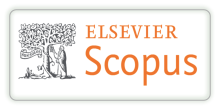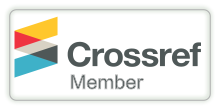A SOCIO-CULTURAL STUDY OF GIDDHA: THE TRADITIONAL FOLK DANCE OF PUNJABI WOMEN
ਔਰਤਾਂ ਦੇ ਲੋਕ ਨਾਚ ਗਿੱਧਾ ਦਾ ਸਮਾਜ-ਸਭਿਆਚਾਰਕ ਅਧਿਐਨ
DOI:
https://doi.org/10.29121/shodhkosh.v5.i1.2024.5971Abstract [English]
Giddha is a favorite folk dance of Punjabis. It dances on happy occasions. This dance has been traveling along with humans from the tribal society. Traces of the wild mind can still be seen in this dance. Samples of this dance are commonly seen in the sculptures found from the Harappan civilization. Its traces are still embedded in the roots of its ancient heritage. Vulture folk dance always depends on the geographical conditions and condition and direction of human life. Is being affected. The lifestyle and standard of living of people is different in every culture. The dances clearly reflect the lifestyle of the people of that society.
Men's daily activities also became the basis of folk dances like boating, ploughing, While fishing, for your safety, hold the rods with both hands and protect yourself from head to toe. To rotate so that a single person can block the attack of more than one person, this action is also used in many folk dances. It is used like this.1
It is clear that it is in human nature to dance like a vulture or other people, but The living conditions of human beings also added their colors to it. Whatever action man did in his daily life, laya and taal were born. In this way man started expressing the thoughts of his mind through physical postures. Vulture, the folk dance of Punjab, also represents Punjab, Punjabi culture and folk heritage. In this dance, the mental complexities of the people of Punjab are presented through human physical actions. Are. Giddha folk dance is danced by women on happy occasions. But in the present age of media, this dance is also danced at cultural events. In Punjab mainly women's vulture is prevalent but now this dance is also performed by male dancers. Goes to dance. Men and women dance this dance in different ways depending on their physical structure and constitution. Gidha is a dance danced collectively by women. This dance is also called dance of happiness. Vulture dance is performed by women on three occasions.
Abstract [Hindi]
ਗਿੱਧਾ ਪੰਜਾਬੀਆਂ ਦਾ ਹਰਮਨ ਪਿਆਰਾ ਲੋਕ-ਨਾਚ ਹੈ। ਇਹ ਖੁਸ਼ੀ ਦੇ ਮੌਕੇ ਤੇ ਨੱਚਿਆਂ ਜਾਂਦਾ ਹੈ। ਇਹ ਨਾਚ ਕਬੀਲਾਈ ਸਮਾਜ ਤੋਂ ਮਨੁੱਖ ਦੇ ਨਾਲ-ਨਾਲ ਤੁਰਿਆ ਆ ਰਿਹਾ ਹੈ। ਇਸ ਨਾਚ ਵਿਚ ਜਾਂਗਲੀ ਮਨ ਦੇ ਅੰਸ਼ ਅੱਜ ਵੀ ਦੇਖੇ ਜਾ ਸਕਦੇ ਹਨ। ਹੜੱਪਾ ਸਭਿਅਤਾ ਦੀਆਂ ਮਿਲੀਆਂ ਮੂਰਤੀਆਂ ਤੋਂ ਇਸ ਨਾਚ ਦੇ ਨਮੂਨੇ ਆਮ ਹੀ ਦੇਖਣ ਨੂੰ ਮਿਲ ਜਾਂਦੇ ਹਨ। ਇਸ ਦੇ ਅੰਸ ਪੁਰਾਤਨ ਵਿਰਸੇ ਦੀਆਂ ਜੜ੍ਹਾਂ ਵਿਚ ਅੱਜ ਵੀ ਧੱਸੇ ਹੋਏ ਹਨ। ਗਿੱਧਾ ਲੋਕ ਨਾਚ ਹਮੇਸ਼ਾ ਹੀ ਭੂਗੋਲਿਕ ਹਾਲਾਤਾਂ ਅਤੇ ਮਨੁੱਖ ਦੇ ਜੀਵਨ ਦੀ ਦਸ਼ਾ ਅਤੇ ਦਿਸ਼ਾ ਤੋਂ ਹਮੇਸ਼ਾ ਹੀ ਪ੍ਰਭਾਵਿਤ ਹੁੰਦਾ ਰਿਹਾ ਹੈ। ਹਰੇਕ ਸਭਿਆਚਾਰ ਵਿਚ ਲੋਕਾਂ ਦਾ ਰਹਿਣ-ਸਹਿਣ ਅਤੇ ਜੀਵਨ ਪੱਧਰ ਵੱਖੋਂ-ਵੱਖਰਾ ਹੁੰਦਾ ਹੈ। ਨਾਚਾਂ ਵਿਚ ਉਸ ਸਮਾਜ ਦੇ ਲੋਕਾਂ ਦੀ ਜੀਵਨ ਸ਼ੈਲੀ ਝਲਕਦੀ ਸਾਫ਼ ਨਜ਼ਰੀ ਆਉਂਦੀ ਹੈ।
ਪੁਰਸ਼ਾਂ ਦੇ ਰੋਜ਼ਮਰਾ ਦੇ ਕੰਮ ਵੀ ਲੋਕ ਨ੍ਰਿਤ ਕ੍ਰਿਆਵਾਂ ਦਾ ਆਧਾਰ ਬਣੇ ਸਨ ਜਿਵੇਂ ਕਿਸ਼ਤੀ ਚਲਾਉਣਾ, ਹਲ ਚਲਾਉਣਾ, ਮੱਛੀ ਫੜਨਾ, ਆਪਣੀ ਸੁਰੱਖਿਆਂ ਲਈ ਸੋਟੀਆਂ ਨੂੰ ਦੋਵੇਂ ਹੱਥਾਂ ਨਾਲ ਸਿਰ ਤੋਂ ਪੈਰਾਂ ਦੀ ਰੱਖਿਆ ਲਈ ਇਸ ਤਰ੍ਹਾਂ ਘੁਮਾਉਣਾ ਕਿ ਇਕੱਲਾ ਵਿਅਕਤੀ ਇਕ ਤੋਂ ਵੱਧ ਲੋਕਾਂ ਦੇ ਵਾਰ ਨੂੰ ਰੋਕ ਸਕੇ, ਇਹ ਕਿਰਿਆ ਵੀ ਲੋਕ ਨ੍ਰਿਤਾਂ ਵਿਚ ਕਈ ਤਰ੍ਹਾਂ ਪ੍ਰਯੋਗ ਹੁੰਦੀ ਹੈ।1
ਸਪੱਸ਼ਟ ਹੈ ਕਿ ਗਿੱਧਾ ਜਾਂ ਹੋਰ ਲੋਕ ਨਾਚ ਨੱਚਣਾ ਮਨੁੱਖ ਦੀ ਫ਼ਿਤਰਤ ਵਿਚ ਹੀ ਹੈ ਪਰ ਮਨੁੱਖ ਦੇ ਰਹਿਣ-ਸਹਿਣ ਨੇ ਵੀ ਇਸ ਵਿਚ ਆਪਣੇ ਰੰਗ ਭਰੇ। ਮਨੁੱਖ ਨੇ ਆਪਣੇ ਰੋਜ਼ਾਨਾਮਚਾ ਜੀਵਨ ਵਿਚ ਜੋ ਵੀ ਕਿਰਤ ਕੀਤੀ ਉਸ ਵਿਚੋਂ ਲੈਅ ਅਤੇ ਤਾਲ ਪੈਦਾ ਹੋਏ। ਇਸ ਤਰ੍ਹਾਂ ਮਨੁੱਖ ਨੇ ਆਪਣੇ ਮਨ ਦੇ ਵਲਵਲਿਆਂ ਨੂੰ ਸਰੀਰਕ ਮੁਦਰਾਵਾਂ ਰਾਹੀਂ ਪ੍ਰਗਟ ਕਰਨਾ ਸ਼ੁਰੂ ਕਰ ਦਿੱਤਾ। ਪੰਜਾਬ ਦਾ ਲੋਕ ਨਾਚ ਗਿੱਧਾ ਵੀ ਪੰਜਾਬ, ਪੰਜਾਬੀਅਤ, ਅਤੇ ਲੋਕ ਵਿਰਸੇ ਦੀ ਤਰਜ਼ਮਾਨੀ ਕਰਦਾ ਹੈ। ਇਸ ਨ੍ਰਿਤ ਵਿਚ ਪੰਜਾਬ ਦੇ ਲੋਕਾਂ ਦੀਆਂ ਮਾਨਸਿਕ ਗੁੰਝਲਾਂ ਮਨੁੱਖ ਦੀਆਂ ਸਰੀਰਕ ਅਦਾਵਾਂ ਰਾਹੀਂ ਪੇਸ਼ ਹੁੰਦੀਆਂ ਹਨ। ਗਿੱਧਾ ਲੋਕ ਨਾਚ ਔਰਤਾਂ ਵੱਲੋਂ ਖੁਸ਼ੀ ਦੇ ਮੌਕੇ ਤੇ ਨੱਚਿਆ ਜਾਂਦਾ ਹੈ। ਪਰ ਅਜੋਕੇ ਮੀਡੀਆ ਦੇ ਯੁੱਗ ਵਿਚ ਇਹ ਨ੍ਰਿਤ ਸਭਿਆਚਾਰਕ ਸਮਾਗਮਾਂ ਉੱਪਰ ਵੀ ਨੱਚਿਆ ਜਾਂਦਾ ਹੈ। ਪੰਜਾਬ ਵਿਚ ਮੁੱਖ ਤੌਰ ਤੇ ਔਰਤਾਂ ਦਾ ਗਿੱਧਾ ਹੀ ਪ੍ਰਚੱਲਿਤ ਹੈ ਪਰ ਹੁਣ ਇਸ ਨਾਚ ਨੂੰ ਮਰਦ ਨਚਾਰਾਂ ਵੱਲੋਂ ਵੀ ਨੱਚਿਆਂ ਜਾਂਦਾ ਹੈ। ਇਸ ਨਾਚ ਨੂੰ ਔਰਤ ਅਤੇ ਮਰਦ ਆਪਣੀ ਸਰੀਰਕ ਬਣਤਰ ਅਤੇ ਬੁਣਤਰ ਦੇ ਆਧਾਰ ਤੇ ਵੱਖ-ਵੱਖ ਢੰਗ ਨਾਲ ਨੱਚਦੇ ਹਨ। ਗਿੱਧਾ ਔਰਤਾਂ ਵੱਲੋਂ ਸਮੂਹਿਕ ਤੌਰ ਤੇ ਨੱਚਿਆ ਜਾਣ ਵਾਲਾ ਨਾਚ ਹੈ। ਇਸ ਨਾਚ ਨੂੰ ਖੁਸ਼ੀ ਦਾ ਨਾਚ ਵੀ ਕਿਹਾ ਜਾਂਦਾ ਹੈ। ਗਿੱਧਾ ਔਰਤਾਂ ਵੱਲੋਂ ਤਿੰਨ ਮੌਕਿਆਂ ਤੇ ਨੱਚਿਆ ਜਾਂਦਾ ਹੈ।
References
Rekha Sharma, Experimental Form in the Dance of Folk Instruments of North India: An Evaluation, Department of Music, Punjabi University, Patiala, Ph.D. Unpublished research arrangement for the degree of, 2012, page-50-51
Jagir Singh Noor, Folk Dances of Punjabis: Cultural History, Punjabi House of Literature and Culture, Phagwara, 1997, page-60
Same, Rekha Sharma, Folk Instruments of North India Ka niron me gon gon ekripemital wurp : a valyonkan, panga-50
Same, Jagir Singh Noor, Folk Dances of Punjabans: Cultural History, Page-35
Bhupinder Singh Khaira, Punjabi Mythological Symbolism, PAPSU Book Depot, Patiala, 1988, 33
Gurdial Singh Phul, Punjabi Culture a Perspective, Publication Bureau, Punjabi University, Patiala, 2013, 60
Gurnam Singh (Ed.), Folk Dances of Punjab, Publication Bureau, Punjabi University, Patiala, 1992, 10
Same, Jagir Singh Noor, Folk Dances of Punjabans: Cultural History, page-77
Nahar Singh, Maa Suhagan Shagan Kare, Publication Bureau, Punjabi University, Patiala, 500
Surjeet Singh, Oral Translation and Cultural Heritage of Punjab, Publication Bureau, Punjabi University, Patiala, 2016, page 55. In simple words, these folk songs are women’s statements. This is An Excellent document to explore and understand women’s condition in Punjabi society.
Downloads
Published
How to Cite
Issue
Section
License
Copyright (c) 2024 Harbans Singh

This work is licensed under a Creative Commons Attribution 4.0 International License.
With the licence CC-BY, authors retain the copyright, allowing anyone to download, reuse, re-print, modify, distribute, and/or copy their contribution. The work must be properly attributed to its author.
It is not necessary to ask for further permission from the author or journal board.
This journal provides immediate open access to its content on the principle that making research freely available to the public supports a greater global exchange of knowledge.































